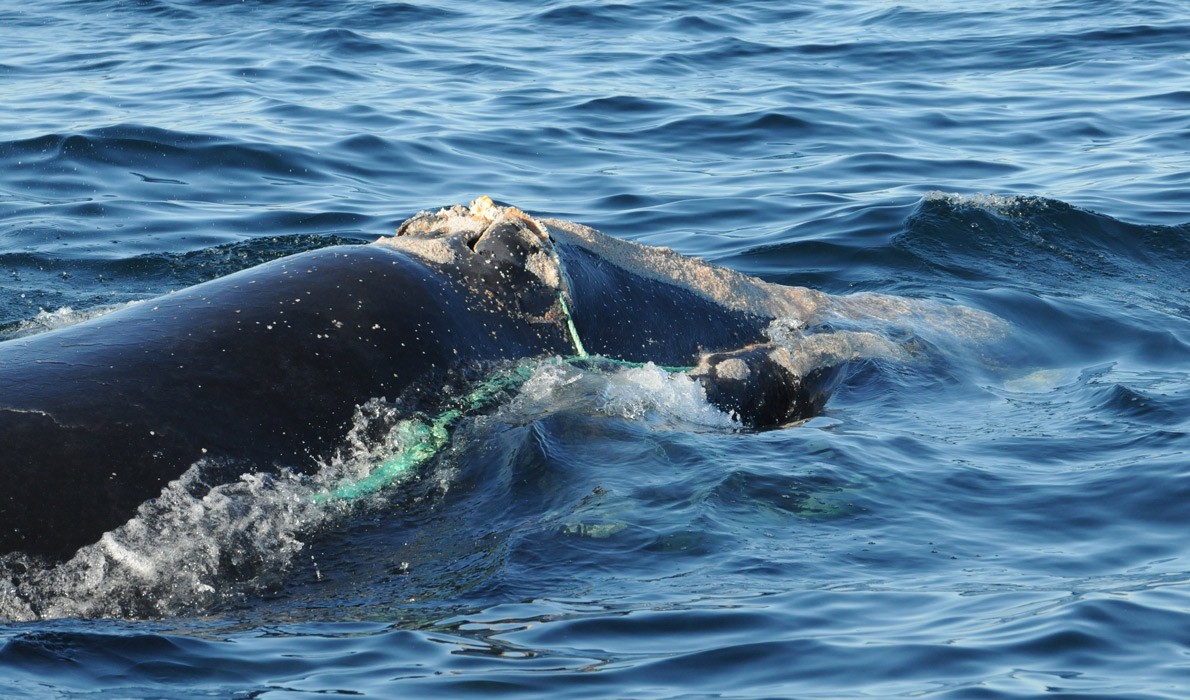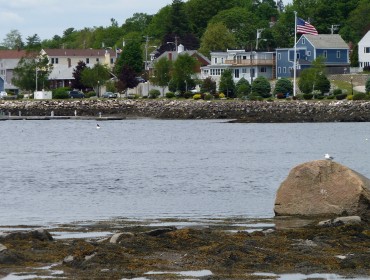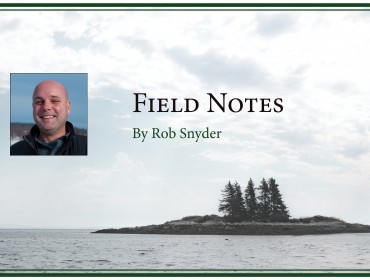Posted April 9, 2018
Last modified April 9, 2018
The Maine Department of Marine Resources has been awarded a grant from the National Oceanic and Atmospheric Administration to improve the data used to protect endangered North Atlantic right whales.
The $714,245 grant is administered by NOAA. The three-year project, which begins this summer, will support work on fishing gear that can inform future whale protection regulations.
With 17 North Atlantic right whale deaths last year, there is growing interest among stakeholders, including regulators and the Maine lobster industry, to improve the data on which future regulations are based.
“Maine has been involved in the development and evolution of whale protection regulations over the past two decades, and this research will ensure that future regulations are based on current, relevant data,” said DMR's Erin Summers. “This study is another example of Maine taking a leadership role in the protection of whales. Right whale habitat use has changed in recent years,” she said. “Understanding how and where fishing gear is used throughout the Gulf of Maine will be crucial to the development of regulations that address the relative risk of entanglement in specific areas. If new regulations are required, we want to have the information necessary to maximize the conservation benefit to right whales.”
The project will include a program to solicit volunteer documentation by harvesters from Maine to Connecticut on how vertical lines are rigged and fished. Information will include rope type and diameter, trap configuration, distance from shore, depth, and type of surface system.
“Without a better understanding of vertical lines, regulators are more likely to implement sweeping regulations which might not be any more effective at protecting whales,” said DMR Commissioner Patrick Keliher. “Good information from industry will increase the likelihood of targeted, effective regulations.”
The project also will include a study on the breaking strength of vertical lines currently in use, as well as the amount of load put on the vertical lines during different hauling conditions. This analysis will document the strength of rope currently in use, determine what rope strength will ensure that harvesters can fish safely and efficiently, and help determine whether reducing the strength of vertical lines might help decrease severe entanglements of right whales. The department will solicit participation from harvesters who are willing to test the hauling loads and breaking strengths of their fishing gear.
The Atlantic Large Whale Take Reduction Team, established 20 years-ago to assess and advise federal regulators on whale protection measures, has recommended in recent years improved reporting by harvesters on gear location and configuration, as well as research into rope strength. “These areas of focus will help managers develop informed, effective regulations,” said Summers.
Contributed by




